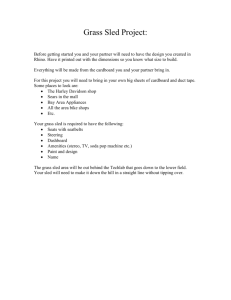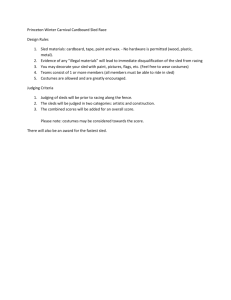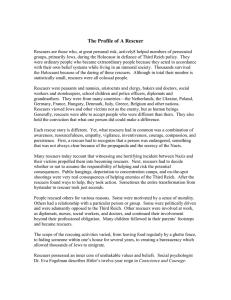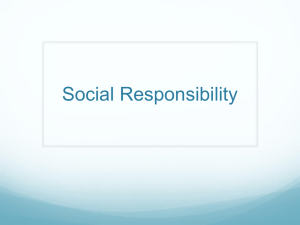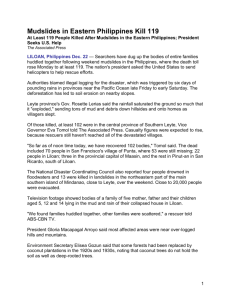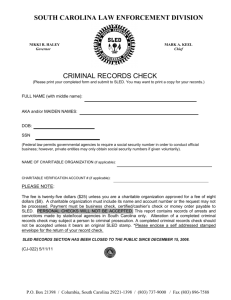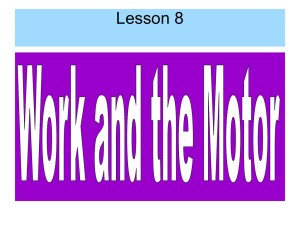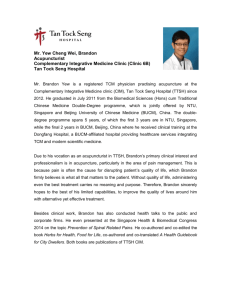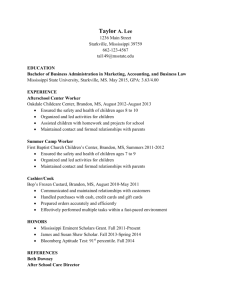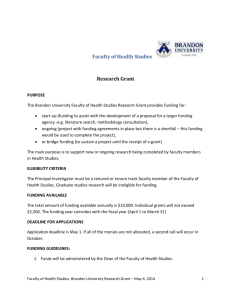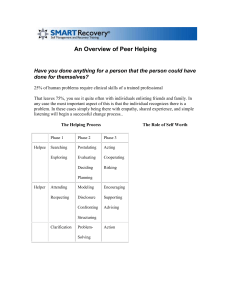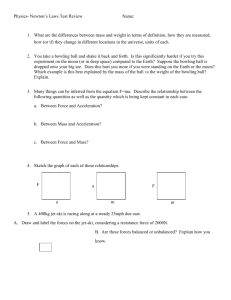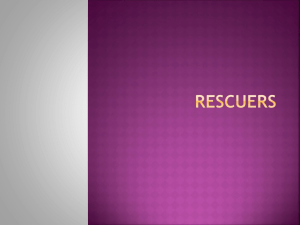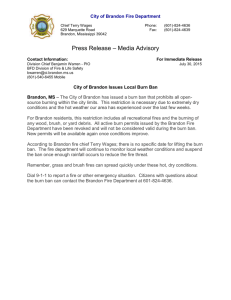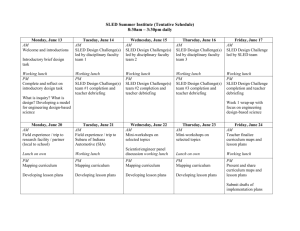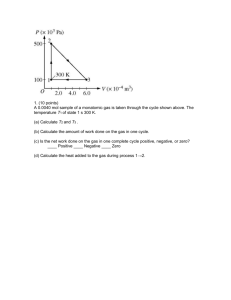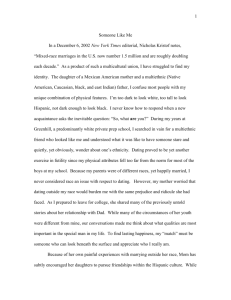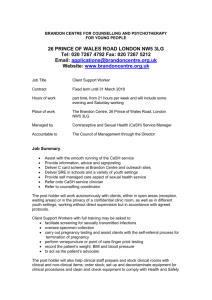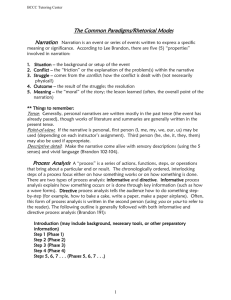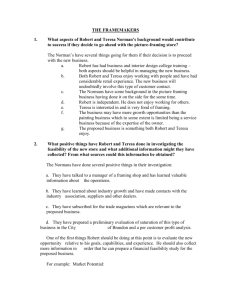SURVIVAL - SHELTERS
advertisement
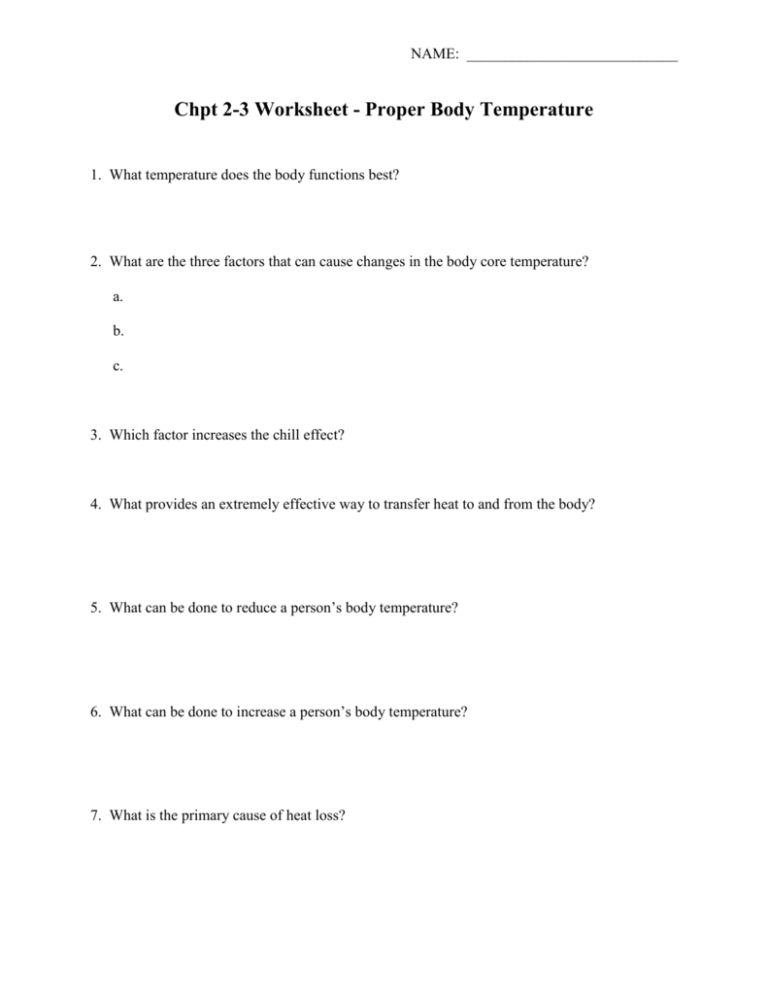
NAME: ____________________________ Chpt 2-3 Worksheet - Proper Body Temperature 1. What temperature does the body functions best? 2. What are the three factors that can cause changes in the body core temperature? a. b. c. 3. Which factor increases the chill effect? 4. What provides an extremely effective way to transfer heat to and from the body? 5. What can be done to reduce a person’s body temperature? 6. What can be done to increase a person’s body temperature? 7. What is the primary cause of heat loss? 8. What three areas of the body must be given particular attention during all periods of exposure to temperature extremes? a. b. c. 9. What type of heat transfer involves the movement of heat from one molecule to another molecule within a solid object? 10. What are two extreme conduction examples of how heat is lost and gained quickly? a. b. 11. What temperature freezes water? 12. What is the major function of clothing? 13. What method does the body use to regulate core temperature when it perspires and air circulates around the body? 14. What type of heat transfer involves the combined processes of convection, evaporation, and radiation? 15. How is heat inhaled or expelled? EXERCISE Read the following exercise and decide what would be the best choice for the survivor in this survival situation. Select one of the alternatives suggested. The New Sled January 15, 1984, in Chicago, at the foot of some of the tallest buildings in the world, Lake Michigan begins to ice over. Four-year-old Brandon Smith, impatient to try out his new sled, stands on the shore and faces the icy cold winds with his father. Suddenly the sled slips down the bank and comes to rest below on the dark ice of the lake. The child jumps from the bank and breaks through the thin film across which his father is already walking. Both fall into the icy waters. The father manages to get to the bank, but his son sinks. The rescue team arrives within 5 minutes, but it takes the divers 15 minutes to locate the boy's body. After 20 minutes under water near 32ºF (0ºC), the child is clinically dead, his skin color is blue, there is no sign of respiration or heart beat, and he displays the clinical symptom that signals death, dilation of the pupil. Nevertheless, the rescuers have incredible faith and do all they can. They administer artificial respiration and repeated cardiac shocks. The oscilloscope continues to register a discouragingly straight line, which is not surprising since all known limits of survival have been far exceeded. The child has been dead for 1 hour and 30 minutes with an internal temperature of 77ºF (25ºC), when suddenly a spike appears on the electrocardiograph. There is one isolated heartbeat, then nothing, then another a little later, and then another, and finally something that seems medically impossible; an irregular heartbeat, a heart that is beating after one and a half hours of clinical death. Once the initial excitement had passed, the rescuers begin to wonder whether the recovery is permanent and especially what the quality of life will be. Since the brain was without oxygen for so long, even given the best circumstances, want this mean that the child will be brain-dead? What should the rescuers do from this point? (circle the best answer) a. Spare the child the pain of living with brain damage. b. Consult a doctor and continue to do what they are doing, but to warm the child up very slowly. c. The child’s body temperature is low, one way to increase the child’s body temperature is to put him in a hot tub of water. d. The rescuers and Brandon’s father should all gather around him and radiate their body heat to Brandon.
